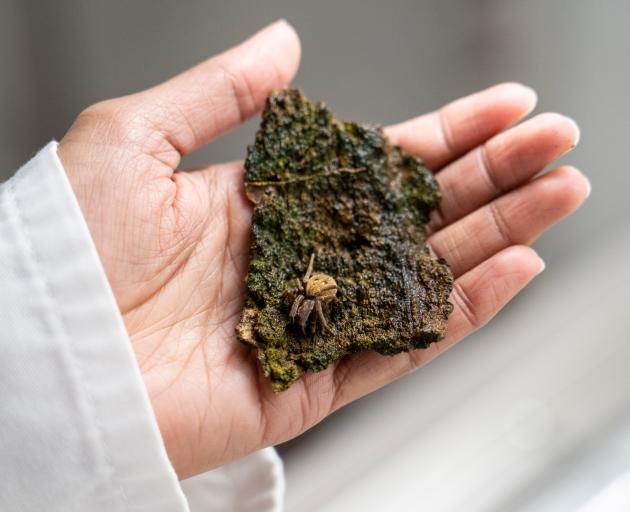Science
Parasitic Worms Transform Spiders into ‘Zombie’ Hosts in New Zealand

A recent study in New Zealand has revealed that parasitic worms, known as mermithids, are turning spiders into what researchers describe as “zombies.” Usha Mendis, a PhD student at Lincoln University, is investigating this unsettling phenomenon and its implications for local ecosystems. Her research aims to uncover how these nematodes manipulate their spider hosts, which could have significant consequences for biodiversity.
Mermithids are known to target various invertebrates, including caddisflies, mayflies, and grasshoppers. Mendis has identified three distinct types of spiders affected by these parasites, highlighting a growing concern for New Zealand’s endemic species. With over 90% of the country’s spider population being endemic, any disruption could pose a threat to the region’s ecological balance. “If something were to happen to them, it would not be good for our biodiversity,” Mendis stated.
The process of parasitism is slow and ultimately fatal for the spider. Parasitized spiders often exhibit physical changes, such as enlarged limbs and swollen abdomens. Mendis notes, “They can be very abnormal. Their legs get shorter but thicker. They look like zombies.” Unfortunately, the only definitive way to identify an infected spider is after its death, when the nematode emerges to continue its life cycle.
Understanding how mermithids infiltrate spiders remains a mystery. Mendis is dedicated to unraveling this aspect of their biology. She explains that the nematodes rely on their spider hosts for energy and nutrients during a critical stage of their life cycle. “They can’t live without a host,” she added, emphasizing the parasitic relationship.
To facilitate their growth and reproduction, mermithids drive their spider hosts toward moist environments. In such conditions, the worms can thrive, mate, and lay eggs, perpetuating the cycle. Mendis has observed that spiders often end up drowned, either as a direct consequence of the parasitism or following the nematode’s emergence from their bodies.
In her research, Mendis employs water traps to collect the nematodes, aiming to study their lifecycle more comprehensively. Despite the fact that mermithids were first reported in New Zealand only 35 years ago, much remains unknown about their interactions with spider species.
As her work continues, Mendis urges the public to reevaluate their perceptions of spiders. “Spiders may look disruptive and creepy, but they’re not the enemy. They’ve got their own problems to deal with,” she remarked, calling attention to the vital role spiders play in maintaining ecological balance.
Mendis’s research not only sheds light on a unique ecological phenomenon but also underscores the importance of understanding the complex relationships within our ecosystems. With ongoing investigations, she hopes to contribute to broader knowledge that may help protect New Zealand’s remarkable biodiversity.
-

 World6 days ago
World6 days agoPrivate Funeral Held for Dean Field and His Three Children
-

 Top Stories1 week ago
Top Stories1 week agoFuneral Planned for Field Siblings After Tragic House Fire
-

 Sports3 months ago
Sports3 months agoNetball New Zealand Stands Down Dame Noeline Taurua for Series
-

 Entertainment3 months ago
Entertainment3 months agoTributes Pour In for Lachlan Rofe, Reality Star, Dead at 47
-

 Entertainment2 months ago
Entertainment2 months agoNew ‘Maverick’ Chaser Joins Beat the Chasers Season Finale
-

 Sports3 months ago
Sports3 months agoSilver Ferns Legend Laura Langman Criticizes Team’s Attitude
-

 Sports4 weeks ago
Sports4 weeks agoEli Katoa Rushed to Hospital After Sideline Incident During Match
-

 Politics2 months ago
Politics2 months agoNetball NZ Calls for Respect Amid Dame Taurua’s Standoff
-

 World2 weeks ago
World2 weeks agoInvestigation Underway in Tragic Sanson House Fire Involving Family
-

 Entertainment3 months ago
Entertainment3 months agoKhloe Kardashian Embraces Innovative Stem Cell Therapy in Mexico
-

 Sports4 weeks ago
Sports4 weeks agoJamie Melham Triumphs Over Husband Ben in Melbourne Cup Victory
-

 World4 months ago
World4 months agoPolice Arrest Multiple Individuals During Funeral for Zain Taikato-Fox




















